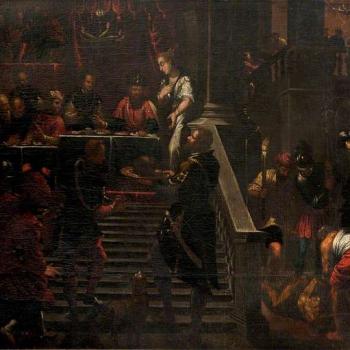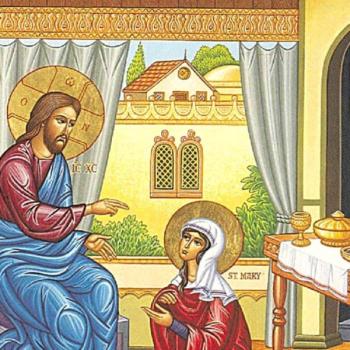In our last column, we explored what we know of the life and ministry of the Apostle Peter. As a major figure, Peter is mentioned frequently in the Bible. We are able to learn a few key things about his life, including his marital status and that he had a brother named Andrew. Andrew is also one of the twelve apostles of the lamb, among the first to follow Jesus.
The Apostle Andrew’s history is both fascinating and spiritually rich, inspiring generations down to the present day. In his life, we learn about both leadership and discipleship, and the way the two interact. Let’s dive into his story.

Who was Andrew?
Andrew was most likely born somewhere between 5 and 10 AD. Like his younger brother Simon Peter (Matthew 4:18–19, Mark 1:16–17), he was born in Bethsaida. His name is unique, in that there’s no Hebrew or Aramaic equivalent for it. This shows cultural engagement and openness within his family, indicating they were Hellenized Jews. By trade, he was a fisherman. It appears from Biblical accounts that he both lived with and worked with his brother.
Unlike Peter, we don’t know anything about Andrew’s personal life (such as if he was married or had children). According to John’s Gospel, Andrew was the “first called” by Christ. It appears he was a disciple of John the Baptist who recognized Jesus as Messiah and told Peter about him.
Andrew, Simon Peter’s brother, was one of the two who heard what John had said and who had followed Jesus. The first thing Andrew did was to find his brother Simon and tell him, “We have found the Messiah” (that is, the Christ). And he brought him to Jesus. (John 1:40-42, NIV)
The rest, as they say, is history.
Andrew’s walk with Jesus
We don’t have a lot of specific incidents about Andrew’s discipleship. Many believe he was closer to Jesus than some of the others, but we don’t have any specific records about this. Instead, we recognize Andrew was present and influential in a few key moments of Christ’s ministry. These include:
- Healing Peter’s mother-in-law: As the record states the home belonged to both Peter and Andrew, it appears Andrew was present when Jesus healed Peter’s mother-in-law (Mark 1:29-31).
- Feeding the five thousand: Andrew noticed the young boy with five barley loaves and two small fish. Thanks to this observation, over five thousand people were fed that day (John 6:1-15).
- Sending out the twelve: Along with the others, Andrew was sent out to heal the sick, raise the dead, cleanse lepers, and drive out demons (Matthew 10:1-8, Mark 3:13-19, Luke 6:12-16).
- Mount Olivet discourse: Along with Peter and John, Andrew asked Jesus about when the last days would come and what those days would look like (John 12:1-3).
- Jesus predicts His death: When some Greeks wanted to speak with Jesus, Philip went to Andrew, and the two went to ask Jesus. On this occasion, Jesus spoke of His impending death (John 12:20-26).
- The Last Supper: Along with the other twelve, Andrew was present at the Last Supper (Matthew 26:17, Mark 14:12).
Andrew after the resurrection
There’s one other mention of the Apostle Andrew in the New Testament, found in Acts 1:12-14, speaking of the election of Matthias to replace Judas:
Then the apostles returned to Jerusalem from the hill called the Mount of Olives, a Sabbath day’s walk from the city. When they arrived, they went upstairs to the room where they were staying. Those present were Peter, John, James and Andrew; Philip and Thomas, Bartholomew and Matthew; James son of Alphaeus and Simon the Zealot, and Judas son of James. They all joined together constantly in prayer, along with the women and Mary the mother of Jesus, and with His brothers. (NIV)
Later accounts
The Apostle Andrew worked in missions around the Black Sea, particularly in what’s today Greece and Turkey. Some accounts say he made it as far as Russia. He was martyred in Patras, Greece somewhere between 60 and 70 AD. He was bound to a cross (rather than nailed) and crucified on a crux decussata, an X-shaped cross. Today, this cross is known as St. Andrew’s cross.
There are three main apocryphal writings about the Apostle Andrew:
Most agree these works weren’t written by Andrew himself, and vary in their historical value. The Acts of Andrew contains details of many miracles and the death of the Apostle Andrew.
Summary
The Apostle Andrew’s life shows us about being a “first” in faith. He was the first brother, the first called, and the first to engage in apostolic activity all the way to Russia. Even though it appears he never wrote a surviving book of the Bible, his apostolic activity influenced the people in a large part of the world. He is the patron saint of Russia, Ukraine, Romania, Patras, and Scotland and is lauded throughout the church year on diverse calendar days.
Another of his disciples, Andrew, Simon Peter’s brother, spoke up, “Here is a boy with five small barley loaves and two small fish, but how far will they go among so many?” (John 6:8-9, NIV)














